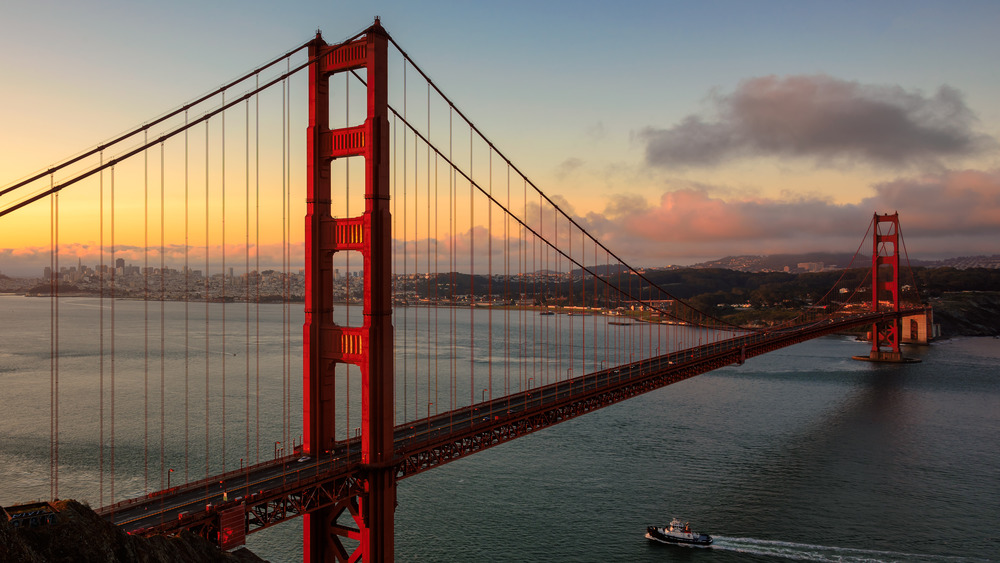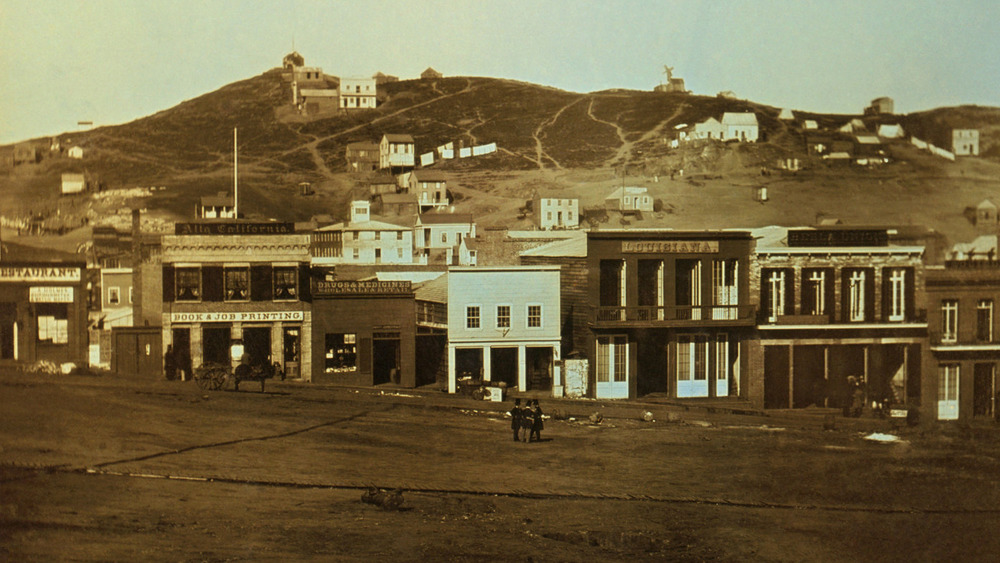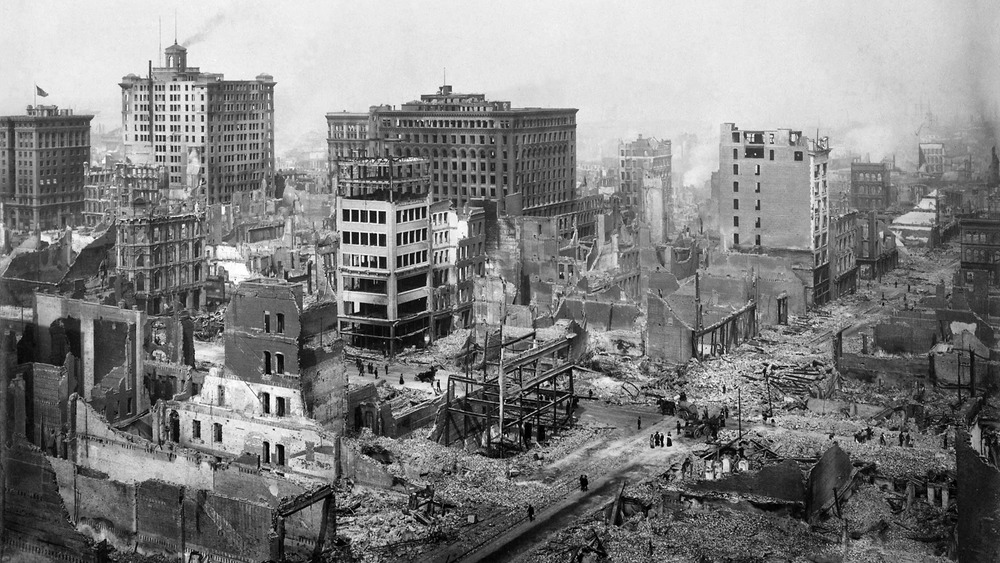The Barbary Coast: San Francisco's 'Sin City'
You won't find it on Google Maps today (though, fittingly, you will find the cannabis dispensary that shares its name), but San Francisco's notorious Barbary Coast shaped — and shamed — the city in countless ways. The City by the Bay's first red light district, which, as Culture Trip tells us, sprawled over parts of what's now the Chinatown, Jackson Square, and North Beach neighborhoods, began the way much vice does: an influx of men with time on their hands and money in their pockets.
The neighborhood grew organically as men flocked to San Francisco in hopes of striking it rich in the gold rush. Some found riches, but many found only trouble. Named after its African counterpart, reports Found San Francisco, this Barbary Coast was also marked by lawlessness and peril. According to Culture Trip, the area's population ballooned from around 200 at the start of the gold rush in 1849 to more than 10,000 within two years. What many of those men were looking for — sex, spirits, saloons — the Barbary Coast was happy to provide.
Word gets around about the Barbary Coast
Those early years might best be evoked by this colorful description, courtesy of Found San Francisco: "Badly drawn paintings of nude women adorn the walls of the best cafes in the city. Prostitutes begin to arrive from the east [...] Gambling houses were everywhere. At the El Dorado it was reported that $80,000 once changed hands on the turn of a single card." Fun place, right? Not so fast.
For all the debauchery, this sinner's paradise was also beset by gang problems. Culture Trip tells of the "Hounds," veterans of the Mexican-American War who roamed the streets harassing Mexican-Americans. Not to be outdone by native troublemakers, Australia sent some of her own, chief among them an outfit known as the Sydney Ducks. Their cute name belies their bad intentions, though; when they weren't running their syndicate of brothels they had a pastime of starting fires. The money had brought the men, the men brought the sex workers, the vice brought the criminals, and now the criminals had brought vigilantes. They helped, for a while.
It was all fun and games until the great quake
While the streets may have been rid of some measure of its criminal element, the vice just moved indoors to the area's brothels and saloons. Found San Francisco recalls some of the period's more colorful characters, including an actor named Oofty Goofty, who didn't feel pain and would let you pay 50 cents to hit him with a baseball bat. There were the pimps who, on a slow night, would let the budget-conscious customer touch a prostitute's breast for 10 cents.
Alas, the good times had to end. The great earthquake and subsequent fire of 1906 wiped out most of the city, says the US Geological Survey, and the gentry recognized an opportunity when they saw one and rebuilt the area. In 1912, some municipal killjoys imposed rules and passed resolutions that changed the area's culture for good. Saloon licenses were capped, barkers could no longer entice customers into the dance halls, and the following year, any establishment that served alcohol could no longer welcome women or permit dancing.
Despite an historic march by more than 200 sex workers to protest the proposed eviction of the area's brothel's, they nevertheless closed their doors in 1917, relates Hoodline. As BeyondChron reports, advocates for the rights of sex workers marked the event's 100th anniversary with a march of their own in 2017, briefly calling to memory a city before big tech and high rent — an unruly and untamed San Francisco


